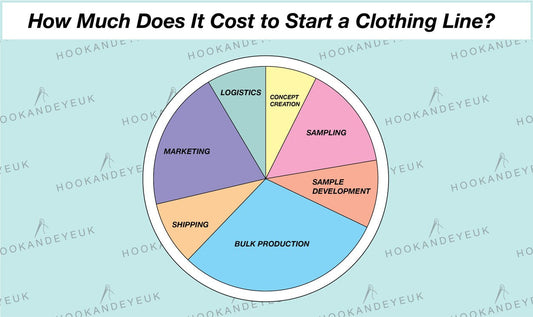In the dynamic world of garment manufacturing, maintaining high standards of quality control is paramount. A well-structured quality control checklist serves as a vital tool for manufacturers and suppliers alike, ensuring that every piece of clothing meets the required specifications before it reaches the consumer. This article delves into the importance of quality control in the garment industry, outlines the essential components of a comprehensive QC checklist, and provides insights into effective quality management practices.

Get your Speedy QC Checklist Below
Looking for a quick quality control checklist for your own garments? We’ve got you covered!
DOWNLOAD OUR QUALITY CONTROL GARMENT CHECKLIST OVERVIEW HERE
Understanding the Importance of Quality Control
Quality control in the garment industry is not merely a procedural formality; it is a critical aspect that can significantly impact a brand's reputation and profitability. Here are several reasons why quality control is essential:
1.1 Ensuring Consistency
A robust quality control system ensures that every garment produced is consistent in terms of size, colour, and overall quality. This consistency is crucial for maintaining customer satisfaction and brand loyalty.
1.2 Minimising Defects
By implementing a thorough quality control checklist, manufacturers can identify and rectify defects early in the production process. This proactive approach reduces the likelihood of costly reworks and returns.
1.3 Compliance with Standards
Garments must adhere to various regulatory standards, such as safety and environmental regulations. A quality control checklist helps ensure compliance with these standards, thereby avoiding legal issues and potential fines.
1.4 Enhancing Brand Reputation
High-quality products enhance a brand's reputation in the market. Consumers are more likely to trust and recommend brands that consistently deliver quality garments.

Key Components of a Garment Quality Control Checklist
A comprehensive garment quality control checklist should encompass various aspects of the production process. Below are the essential components that should be included:
2.1 General Information
· Brand Name: Identify the brand associated with the garment.
· Style (Item) Number: Specify the style number or code for tracking purposes.
· Factory Used: Document the factory where the garment is produced.
· Inspection Date: Record the date of the inspection.
· Inspector Name: Include the name of the inspector conducting the quality check.
· Quantity Ordered: State the total quantity of garments ordered.
· Quantity Inspected: Indicate how many garments were inspected.
· Missing Units: Note any missing units, specifying size and box number.
2.2 Workmanship
Inspectors should check for the following workmanship criteria:
· No open seams
· Untrimmed threads (considered a minor issue)
· Even and secure stitching
· Correct stitch density and tension
· Proper alignment of patterns and seams
· Absence of skipped or broken stitches
· No puckering or distortion at seams
2.3 Measurement and Sizing
Accurate measurements are crucial for garment fit. Inspectors should verify:
· Garment matches the size chart
· Tolerances within specified limits (typically ±0.5cm to ±2.5cm)
· Symmetry between left and right sides
· Correct sleeve, inseam, and general seam lengths
· Proper draping on a mannequin or form
2.4 Fabric and Material
Quality control should also encompass the fabric and materials used:
· Correct fabric as per tech pack/spec sheet
· Colour matches approved swatches under appropriate lighting
· Absence of fabric defects (holes, stains, snags)
· Material stretch and recovery as per sample
· Alignment and clarity of print/embroidery
2.5 Trims and Accessories
Inspectors should ensure that all trims and accessories meet quality standards:
· Functional and secure buttons, zippers, and snaps
· Correctly attached labels and tags
· No missing trims or accessories
· Thread colour and accessories match approved samples
· Accurate wash care and brand labels
2.6 Packaging and Presentation
Proper packaging is essential for protecting garments during transit. Check for:
· Correct folding and packing methods
· Appropriate polybag or box used for packing
· Accurate size stickers, barcodes, and tagging
· Absence of mould, odour, or moisture in packaging
· Accurate carton marking and labelling
2.7 Compliance and Safety
Garments must meet safety and compliance standards. Inspectors should verify:
· Compliance with buyer and market standards (e.g., REACH)
· Absence of sharp edges or harmful components
2.8 Defect Classification
Defects should be classified to facilitate effective resolution:
· Critical Defects: Safety issues, incorrect size/label
· Major Defects: Visible fabric flaws, open seams
· Minor Defects: Loose threads, slight puckering
2.9 Inspection Result
At the conclusion of the inspection, document the results:
· Pass
· Fail
· Re-inspection required

Implementing Effective Quality Control Procedures
To ensure the successful implementation of quality control procedures, manufacturers should consider the following strategies:
3.1 Training and Development
Investing in training for quality control staff is essential. Inspectors should be well-versed in the standards and expectations for garment quality. Regular training sessions can help keep the team updated on best practices and new regulations.
3.2 Communication and Collaboration
Effective communication between manufacturers and suppliers is vital. Regular meetings and updates can help ensure that everyone is on the same page regarding quality expectations and production timelines.
3.3 Utilising Technology
Incorporating technology into the quality control process can enhance efficiency. Digital checklists and inspection software can streamline the documentation process and provide real-time data on quality metrics.
3.4 Continuous Improvement
Quality control should not be a one-time effort. Manufacturers should regularly review and update their quality control checklists based on feedback and inspection results. This continuous improvement approach helps identify recurring issues and implement corrective actions.
Get Quality Right from the First Stitch — With Tech Packs That Power Precision
At Hook and Eye UK, we understand that quality control doesn't start at the inspection table — it begins with the tech pack. A well-structured, detailed tech pack lays the foundation for flawless execution in every phase of production — from sampling to final shipment.
When your tech pack is incomplete or unclear, manufacturers are left to guess. That’s where inconsistency, defects, and costly reworks begin.
But when your tech pack includes:
· Specific design measurements connected to a general fit garment reference
· Fabric and trim references with visual aids
· Construction details with annotated diagrams
· Packaging and labelling designs
· Fit and finish expectations clearly defined
…it becomes a blueprint for quality. It empowers your suppliers to get it right the first time, and your QC teams to confidently inspect with clarity.
Partner with Hook and Eye UK to create tech packs that reduce quality issues, align your production teams, and streamline inspections — every single time.
Don’t forget if you’re looking for a quick quality control checklist for your own garments download our guide below.
DOWNLOAD OUR QUALITY CONTROL GARMENT CHECKLIST OVERVIEW HERE
Hope you found this helpful,
H&E team :)








